Configuring wearable notification apps transforms your health management from reactive to proactive monitoring. You’ll receive real-time alerts when your heart rate spikes, blood oxygen drops, or sleep patterns indicate potential issues, enabling immediate preventive action. These apps achieve 92-99% accuracy with advanced sensors while boosting engagement by 50% through personalized feedback and gamification. They reduce healthcare costs by preventing expensive emergency interventions and improve chronic disease management through continuous tracking. Discover how these powerful tools can revolutionize your wellness journey.
Real-Time Health Monitoring Outside Clinical Settings
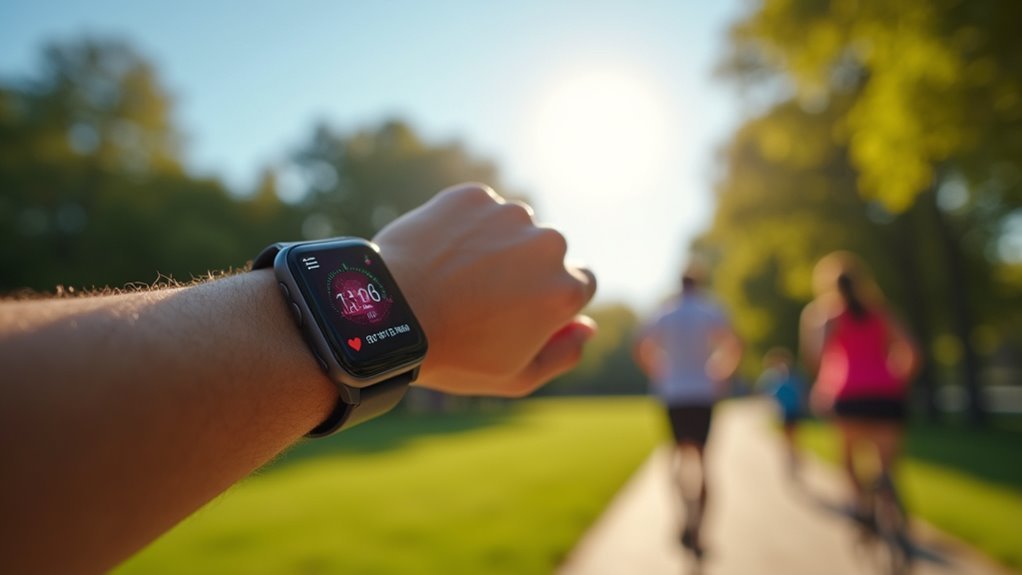
As healthcare shifts beyond traditional clinical boundaries, wearable notification apps have become essential tools for monitoring your health in real-time throughout your daily activities.
You’ll receive continuous, non-invasive tracking of crucial signs like heart rate, blood oxygen levels, and sleep quality without needing clinical supervision. Modern sensors achieve 92-99% accuracy, making them reliable for everyday health management.
These apps provide immediate alerts about critical health changes, enabling you to respond proactively before requiring medical intervention. With AI integration, you’ll get predictive analytics that identify potential health issues early.
This continuous monitoring supports your treatment adherence by tracking medication effects and lifestyle modifications, ultimately empowering you to take control of your health outside traditional healthcare settings. With 47.33% engaging with wearable devices daily, these technologies have become integral to routine health management for nearly half of all users.
Enhanced Chronic Disease Management and Early Detection
You’ll transform your chronic disease management by leveraging wearable notification apps that deliver continuous health insights beyond traditional clinical visits.
These apps enable you to catch potential complications early through real-time monitoring, allowing for immediate adjustments to your treatment plan before issues escalate. Wearable devices have demonstrated improved adherence to physical activity goals and better management of conditions like diabetes through enhanced self-monitoring capabilities.
You’re also investing in a cost-effective healthcare approach that reduces expensive emergency interventions while maintaining better overall health outcomes.
Real-Time Health Monitoring
When you configure wearable notification apps for real-time health monitoring, you’re revealing continuous physiologic tracking that fundamentally transforms how chronic diseases are managed and detected.
Your device constantly collects heart rate, blood oxygen, and activity data, generating accurate health baselines that enable better trend analysis. This continuous monitoring provides real-time symptom tracking and early anomaly detection, alerting you when measurements exceed preset safety thresholds.
The benefits include:
- 30% reduction in hospital readmissions through timely interventions based on real-time data
- 45% increase in exercise compliance compared to 25% without wearable devices
- 60% of patients report feeling more secure due to constant health tracking
You’ll experience faster identification of health crises, preventing acute events before severe symptoms occur while supporting preventive care strategies. These systems also facilitate telehealth integration, enhancing patient care accessibility and enabling healthcare providers to monitor patients remotely with comprehensive real-time data.
Proactive Intervention Strategies
Building on continuous health data collection, your wearable notification apps enable healthcare providers to implement targeted intervention strategies before health issues escalate into medical emergencies.
You’ll receive data-driven recommendations that allow your care team to proactively adjust treatment plans based on emerging health trends. This approach greatly reduces your risk of acute hospitalizations by catching problems early.
Your wearable apps guide you toward healthier lifestyle choices through personalized suggestions for diet, exercise, and stress management.
The biofeedback features help you manage stress levels, which directly impacts chronic disease progression. You’ll also gain access to educational resources that empower you to take control of your health management, making informed decisions about your daily activities and treatment adherence. Real-time data provides objective measurements to complement your personal health experiences and symptoms.
Cost-Effective Care Solutions
Since wearable notification apps transform costly reactive healthcare into affordable preventive care, you’re investing in a system that delivers substantial long-term savings while improving your health outcomes.
These configurations enable early detection of complications before they require expensive emergency interventions or hospitalizations.
Your financial benefits include:
- Reduced medical expenses – Fewer emergency room visits and hospital admissions through proactive monitoring
- Lower indirect costs – Less time off work and reduced travel expenses for medical appointments
- Prevention savings – Early intervention prevents costly disease progression and complications
You’ll also benefit from more efficient use of healthcare resources through remote monitoring capabilities. The economic impact is significant, as chronic diseases are projected to result in trillions of dollars in losses by 2030 without proper intervention.
Boosting User Engagement Through Personalized Feedback
You’ll receive real-time health alerts that notify you instantly when your wearable detects irregular patterns or potential health concerns.
Your device creates personalized motivation systems that celebrate your achievements and encourage you to maintain healthy habits through targeted feedback. These intelligent systems leverage predictive analytics to anticipate your health needs and provide proactive recommendations before issues develop.
This consistent data connection guarantees you’re always informed about your progress while building stronger engagement with your health goals.
Real-Time Health Alerts
When your smartwatch buzzes with a heart rate spike alert or your fitness tracker notifies you about irregular sleep patterns, you’re experiencing real-time health alerts that can transform how you engage with your wellness journey.
These immediate notifications boost your health awareness and motivate behavioral changes that lead to better outcomes.
However, you’ll need to take into account several factors for effective implementation:
- Data Quality: Verify your device provides accurate readings, as poor data quality can trigger false alerts.
- User Compliance: Configure alerts you’ll actually respond to, since ignoring notifications reduces their effectiveness.
- Technical Integration: Choose devices with reliable APIs that seamlessly connect with your existing health apps.
The medical alert systems market continues expanding, driven by innovations like smart gloves for elderly care and enhanced user engagement features. With IP-based systems leading technological advancement, these platforms offer improved connectivity and response capabilities for health monitoring applications.
Personalized Motivation Systems
While generic fitness notifications might feel impersonal and easy to ignore, personalized motivation systems transform your wearable device into an intelligent coaching companion that understands your unique patterns and preferences.
These systems analyze your behavior to deliver customized experiences that boost retention rates by 25%. You’ll receive adaptive feedback tailored to your progress and goals, making each interaction more meaningful and motivating.
When combined with gamification elements like challenges and badges, engagement increases by 30%.
Social connectivity features amplify this effect, driving engagement up by 50% through shared achievements and community support.
Goal-setting strategies with targeted objectives can increase your activity by 40%, while tailored notifications enhance app usage by 20%, creating a thorough motivation ecosystem. Research shows that understanding your personal motivation type is crucial for determining which features will be most effective for your fitness journey.
Consistent Data Connection
Since wearable devices generate over 2.5 quintillion bytes of health data daily, maintaining a consistent data connection becomes the foundation for delivering personalized feedback that keeps you engaged.
Without reliable connectivity, you’ll miss critical health insights and motivational cues that drive long-term usage.
Consistent data flow transforms your wearable experience through:
- Real-time health monitoring – Continuous connection guarantees you receive immediate alerts for irregular heartbeats or fitness milestones, supporting early detection of conditions like atrial fibrillation.
- Seamless telehealth integration – Over 60% of telehealth patients rely on wearable data sharing with doctors, requiring stable connections for effective care.
- Personalized insights delivery – Uninterrupted data streams enable customized notifications based on your unique health patterns and goals.
When technical issues disrupt connectivity, user frustration increases and engagement drops markedly, undermining your health tracking efforts. With global wearable device shipments expected to reach 645.7 million units by 2028, the demand for reliable connectivity will only intensify as more users depend on consistent data flow for their health management.
Immediate Preventive Action With Timely Health Alerts
Although wearable devices reached 36.36% adoption rates in 2022, their greatest value lies in delivering immediate health alerts that can trigger life-saving preventive actions.
When your device detects irregular heart rhythms or concerning health patterns, you’ll receive instant notifications that prompt critical healthcare decisions. These alerts drive measurable behavior changes—20% of users contact healthcare providers after receiving irregular rhythm notifications, leading to increased outpatient visits and medical procedures.
You’ll find yourself engaging more with healthcare services through telephone calls and patient portal messages. Despite these benefits, only 18% of individuals with cardiovascular disease currently use wearable devices, indicating significant untapped potential for health improvement.
Superior Data Accuracy With Advanced Wearable Sensors
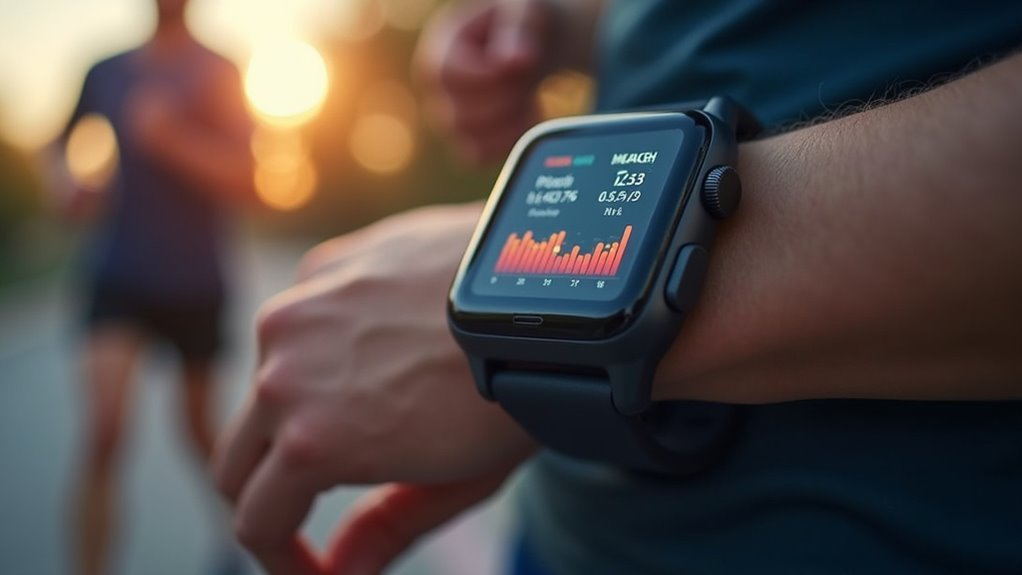
When you configure wearable notification apps, you’re granting access to sophisticated sensor technology that delivers unprecedented data accuracy for health monitoring.
Advanced devices employ photoplethysmography (PPG) sensors and accelerometers that achieve remarkable precision through multi-sensor fusion.
Your configured notifications guarantee peak sensor performance by:
- Alerting you to recalibrate when motion artifacts compromise heart rate readings during dynamic activities
- Prompting proper device placement since wrist positioning critically affects optical sensor accuracy
- Notifying about low battery states that can degrade sensor sampling rates and data quality
Premium wearables like Apple Watch demonstrate up to 99% heart rate accuracy in controlled conditions, while step counting reaches 99.5% precision.
However, you’ll maximize these capabilities only through proper configuration that maintains sensor contact, prevents motion interference, and guarantees continuous operation. Notification alerts become increasingly important because accuracy decreases with exercise intensity, requiring real-time adjustments to maintain measurement reliability during high-intensity workouts.
AI-Driven Insights for Personalized Medicine
Your wearable device’s AI capabilities transform raw health data into personalized medical insights that adapt specifically to your body’s unique patterns and needs.
Through real-time health analytics, you’ll receive treatment recommendations that evolve based on your physiological responses, lifestyle factors, and health history. Advanced sensors can now detect irregular heart rhythms like atrial fibrillation, providing critical cardiovascular monitoring capabilities.
This intelligent analysis enables your device to provide tailored guidance that’s far more precise than generic health advice, optimizing your care through continuous learning and adaptation.
Real-Time Health Analytics
As wearable devices evolve beyond simple step counters, they’re transforming into sophisticated health monitoring systems that deliver precision medical insights directly to your wrist.
Modern sensors achieve 92-99% accuracy in measuring essential signs, enabling continuous monitoring of heart rate, blood pressure, oxygen saturation, and glucose levels without invasive procedures.
Real-time health analytics provide three critical advantages:
- Immediate anomaly detection – Your device captures health changes instantly, alerting you and your healthcare provider before symptoms become severe.
- Reduced false alarms – Enhanced sensor accuracy minimizes unnecessary alerts while maintaining reliable emergency notifications.
- Seamless data integration – Continuous monitoring eliminates manual input, creating extensive health profiles that support proactive care decisions.
This technology enables you to receive immediate health status updates, supporting early intervention and personalized treatment adjustments. The integration of AI technologies is enhancing personalization capabilities, delivering predictive analytics that can forecast potential health issues based on your individual patterns and historical data.
Tailored Treatment Recommendations
Beyond simple health monitoring, artificial intelligence transforms your wearable device into a personalized medical advisor that delivers treatment recommendations tailored specifically to your unique physiological patterns.
Your wearable analyzes vast amounts of your health data to create customized treatment plans that reduce side effects while improving outcomes. The AI processes your individual health trends and predicts which interventions will work best for your specific profile.
You’ll receive real-time, actionable insights that empower you to take proactive control of your health. Modern wearables facilitate preventive healthcare measures by encouraging self-management and increasing awareness of personal health metrics.
The system’s pattern recognition capabilities detect early signs of chronic conditions, enabling timely interventions before problems escalate. This precision medicine approach guarantees you’re not receiving generic recommendations but personalized care based on your body’s distinct needs and responses.
Expanding Functional Use Cases Across Health Applications
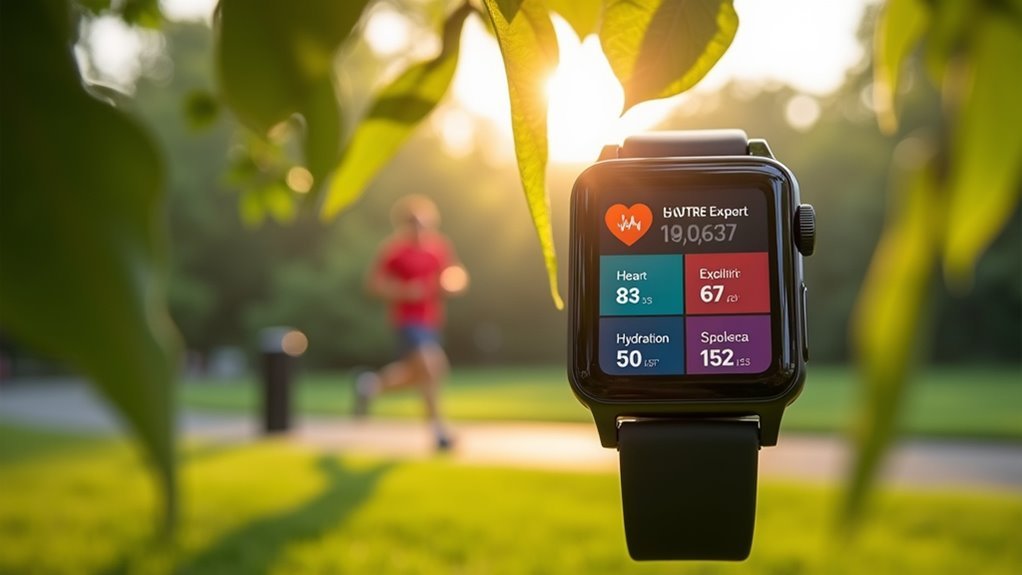
While fitness trackers once dominated the wearable landscape with basic step counting, today’s health applications have expanded into sophisticated monitoring systems that tackle everything from chronic disease management to preventive care.
You’ll find wearables now monitor heart rate, blood pressure, and blood glucose levels in real-time, enabling prompt medical interventions when needed.
Modern health apps deliver extensive features that transform your daily health management:
Today’s health applications revolutionize personal wellness through comprehensive monitoring systems that seamlessly integrate into your everyday routine.
- Activity and sleep monitoring with personalized insights and recommendations
- Medication adherence reminders that improve compliance with treatment regimens
- Early risk detection through continuous data analysis for preventive care measures
You can share this valuable health data directly with your healthcare providers, creating seamless integration between your wearable device and professional medical care for enhanced treatment outcomes. With daily usage becoming the norm for most users, these devices provide consistent health monitoring throughout your routine activities.
Market Opportunities for App Developers and Healthcare Providers
The wearable technology market’s explosive growth presents unprecedented opportunities for both app developers and healthcare providers to capitalize on a $84.2 billion industry expanding at 13.6% annually through 2030.
You can tap into the $3.5 billion wearable app development market projected for 2025, driven by demand for custom health monitoring solutions, fitness coaching, and clinical-grade applications.
Healthcare providers benefit from partnering with developers to create chronic disease management apps and remote patient monitoring systems.
Key opportunities include glucose monitoring apps, specialized health metric tracking, and notification systems for diverse wearable platforms from Apple, Google, Samsung, and Garmin. Integration of voice assistants enhances functionality and user experience across these wearable notification applications.
Success requires strategic localization for APAC, North American, and European markets while ensuring regulatory compliance.
Improved Security and Data Access Controls
As wearable technology adoption accelerates across healthcare and consumer markets, developers must address the significant security vulnerabilities that make these devices attractive targets for cybercriminals.
Your notification apps handle massive amounts of sensitive user data, creating potential entry points for data exfiltration and unauthorized access.
Configuring robust security measures safeguards both users and your business reputation:
Robust security configurations protect user data while preserving your company’s credibility and market standing.
- Implement two-factor authentication – This eliminates common security vulnerabilities and adds essential protection layers.
- Restrict app permissions – Control what data your notifications can access, preventing unauthorized information exposure.
- Enable encryption standards – Guarantee all data transmitted through notifications remains protected during transfer.
You’ll also need customizable notification controls that let users manage what sensitive information displays on their devices, while maintaining compliance with privacy regulations and data localization requirements. Modern wearable notifications support reply actions that enable secure user responses through voice input or pre-defined text options.
Significant Healthcare Cost Reduction and Remote Monitoring
Healthcare organizations can dramatically slash operational costs by deploying wearable notification apps that enable continuous remote patient monitoring.
You’ll achieve substantial savings through preventive care tracking that reduces expensive hospital readmissions and emergency visits by $500-$1,000 per person annually. Remote monitoring eliminates unnecessary clinical visits while enabling early detection of health deterioration before complications arise.
European healthcare systems anticipate saving over €50 billion annually through wearable-enabled remote monitoring, with Sweden alone projecting €3 billion in yearly savings.
You’ll see enhanced patient engagement as real-time data encourages treatment adherence and lifestyle modifications. Cardiovascular patients experience a 43% lower likelihood of hospital readmission when using wearable monitoring devices. Corporate wellness programs using wearables deliver $3.27 return on every dollar invested, reducing absenteeism and chronic disease prevalence while improving workforce productivity and lowering insurance costs.
Streamlined Self-Management and Clinical Efficiency
When patients take control of their health through wearable notification apps, you’ll witness a transformation in how medical care is delivered and managed.
These devices empower you to maintain better health routines through convenient reminders and real-time feedback, fostering proactive self-management and increased responsibility for your own well-being. The COVID-19 pandemic significantly boosted interest in health technology, driving wearable adoption rates to 36.36% in 2022 from previous levels of 28%-30% in 2019.
The clinical benefits extend beyond personal empowerment:
- Streamlined Data Sharing – Your wearable devices automatically transmit health information to clinicians, enabling efficient review of your status without constant office visits.
- Faster Decision-Making – Real-time data allows healthcare providers to make quicker treatment adjustments and prioritize patient care more effectively.
- Enhanced Care Continuity – Integration with electronic health records improves data-driven workflows and maintains thorough treatment histories.
This seamless connection between self-management and clinical oversight optimizes healthcare delivery while reducing provider workload.
Frequently Asked Questions
How Do I Initially Set up Wearable Notification Apps on My Device?
You’ll download the Galaxy Wearable app on your mobile device, make sure your wearable’s paired via Bluetooth, open the app, navigate to Watch settings, select Notifications, and choose to show phone notifications on your wearable.
Which Wearable Brands Are Most Compatible With Popular Health Apps?
Apple Watch offers the strongest compatibility with health apps like Strava and MyFitnessPal, achieving 79% user satisfaction. Wear OS devices provide excellent cross-platform integration, while Fitbit excels with its dedicated ecosystem serving 28 million users.
How Often Should I Charge My Wearable to Ensure Reliable Notifications?
You should charge your wearable daily or when battery drops below 20-30%. Regular charging schedules guarantee you won’t miss critical notifications due to unexpected power drain from heavy usage or background processes.
Can I Customize Which Types of Health Notifications I Receive Daily?
You can customize health notifications by selecting specific apps, setting alert thresholds for metrics like heart rate, choosing notification frequency, and prioritizing critical alerts over routine updates.
What Happens to My Health Data if I Switch Wearable Devices?
You’ll need to export your data from your old device’s app or cloud storage, then sync it with your new wearable’s system to maintain continuity and access historical health information.
In Summary
You’ll transform your healthcare experience by configuring wearable notification apps. You’re gaining real-time monitoring, personalized feedback, and early disease detection that wasn’t possible before. You’ll catch health issues early, reduce medical costs, and manage chronic conditions more effectively. These apps don’t just track data—they’ll actively alert you to take preventive action. You’re investing in superior accuracy, enhanced security, and streamlined self-management that’ll revolutionize how you approach your health.

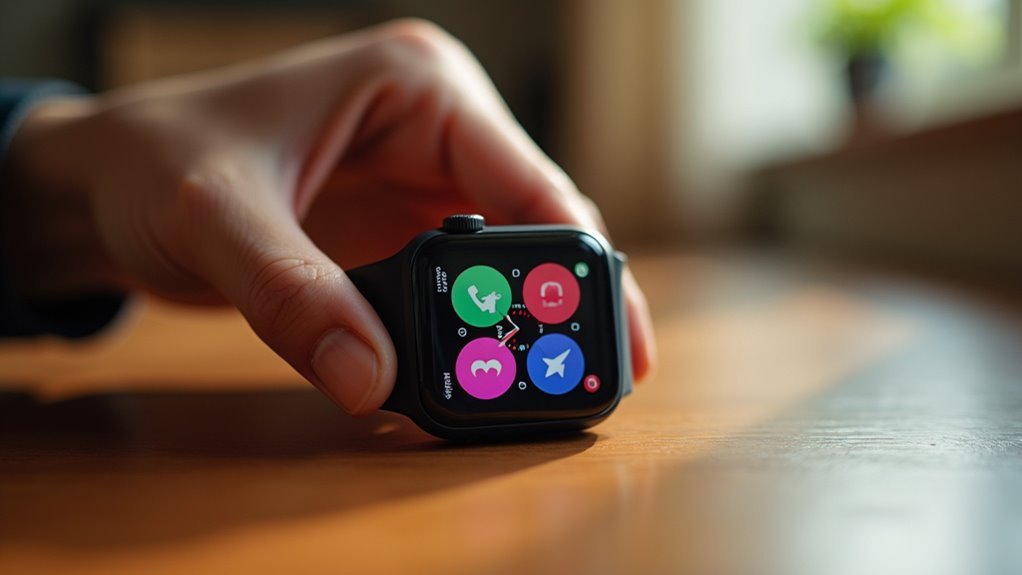
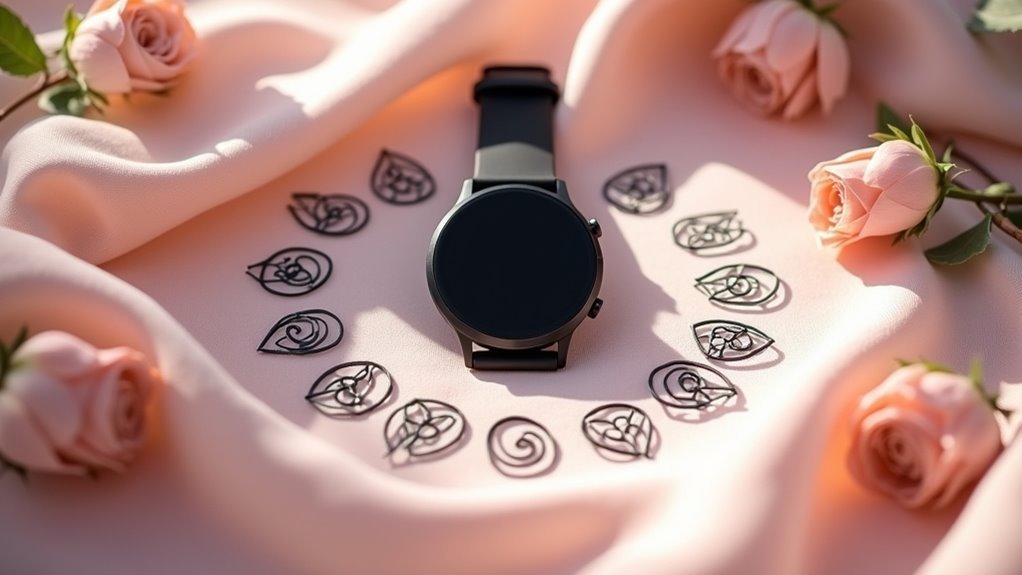
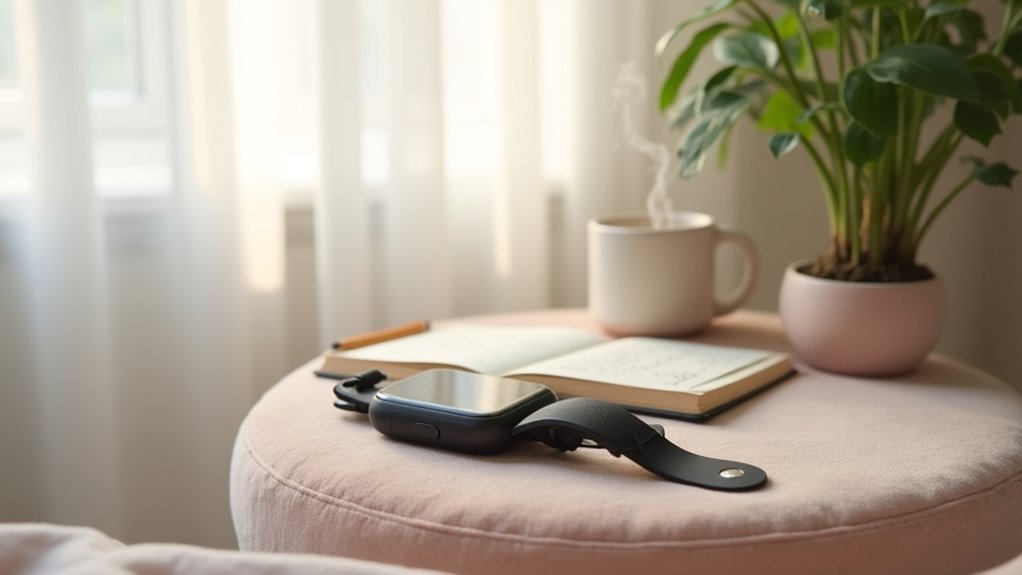

Leave a Reply